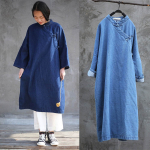Do-it-yourself sewing from raincoat fabric at home
 First, let's figure out which raincoat fabric "exists in nature" and what main types of raincoat fabrics are in stores
First, let's figure out which raincoat fabric "exists in nature" and what main types of raincoat fabrics are in stores
Of course, we all know that raincoat fabric is a fabric impervious to water and wind, more often of artificial or mixed origin. It is elastic, light, practical and wearable.
Modern technologies have significantly expanded its range and improved quality. The market is replete with both lightweight summer options and insulated materials for sewing autumn-winter outerwear. Raincoat fabrics suitable for sewing awnings, tents, bags and backpacks are also presented.
Types of raincoat fabrics that are suitable for sewing
- Raincoat "Oxford" - camouflage or plain dense raincoat fabric of a mixed type. It is a rigid material with a polyamide coating. Usually, durable tourist clothing is sewn from it - jackets, trousers, overalls, bags and overalls.
An example of sewing from a dense raincoat fabric is the so-called Wasserman's vest, pattern which you can download from our website after payment.
- Raincoat fabric membrane - dense and thin based on polyester, not suitable for cold weather without insulating materials and is used as a waterproof layer when sewing down jackets and clothes with other heaters.
- Duspo is an ideal fabric for sewing winter clothes. Dewspo (“dew” and “polymer”) is a synthetic rather dense fabric of plain weave with impregnation. In this case, the impregnation may look different and be both from the inside and from both sides. Of the shortcomings, only hand washing recommended by manufacturers can be called.
We list some types of Duspo:
- rei-duspeau (thin, found in designer outfits),
- milka (with a characteristic milky sheen),
- shiny sire,
- Jagard with textured surface,
- bonding (knitted base inside and polyurethane impregnation outside),
- pitch skin with brushed surface for elite sportswear and others.
- Taslan is a rep weave fabric and, when compared with duspo, it has a greater density and roughness. Taslan is also suitable for sewing jackets and raincoats.
For example, for down jackets according to the finished pattern
- Twill is a cotton-based blend with wool and a minimal amount of polyester to improve durability and wear. Suitable for allergy sufferers, as the diagonal twill weave and the presence of villi provide water resistance, and not the synthetic impregnation finish. Textile breathes, while retaining heat, like all quality raincoat fabrics.
Twill is perfect for trench coat
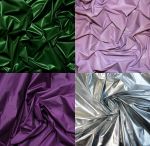 Jordan - polyester with a smooth iridescent texture and a thin layer of polyurethane from the inside; poly jordan is a similar material with a lacquer sheen. Raincoat fabric "Jordan" is the perfect choice for sewing a windbreaker! Plus, this fabric is machine washable.
Jordan - polyester with a smooth iridescent texture and a thin layer of polyurethane from the inside; poly jordan is a similar material with a lacquer sheen. Raincoat fabric "Jordan" is the perfect choice for sewing a windbreaker! Plus, this fabric is machine washable.
The windbreaker can be sewn bomber pattern
The following types are also popular: quilted raincoat fabric (used for sewing down jackets, and the fluff or synthetic winterizer is held by fine stitching), insulated on fleece, high-max - super-dense protection from rain and wind (suitable for winter jackets); varnish - leather imitation and others.
You can buy raincoat fabric without impregnation here - https://www.bosfor.ua/shop/waterproof-fabric-300t-pd/
How are raincoats different?
When choosing a fabric in a store, pay attention to the following characteristics:
- density (the number of intersections of longitudinal and transverse threads, measured in tex);
- weaving method (for example, twill);
- composition (usually cotton with polyester or lavsan, or exclusively synthetic fabric);
- the weight;
- the presence or absence of impregnation, coating (Water Resistance / сovering / No covering);
- water-repellent, heat-saving qualities.
Not all raincoats protect from wind or cold, not all of them allow air to pass through (the relatively expensive membrane “breathes” perfectly) and are pleasant for the body (if this parameter is important, choose matter with at least a partially natural composition). Thick, dense textiles are difficult to process (keep this in mind if you are going to sew yourself).
The composition of matter often includes cotton and various artificial fibers. It can be: polyester, nylon, viscose, nylon, lavsan or combinations thereof, as well as wool. Less common is a completely natural raincoat fabric made of impregnated cotton.
Water resistance is ensured by the weaving itself or impregnation or padding with polyurethane and other substances.
How to distinguish high-quality fabric from cheap analogues?
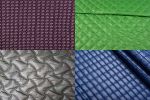 High-quality textile does not wrinkle, washes well, dries quickly, does not let moisture through, protects from wind, retains color and shape for a long time. If the fabric is intended for sewing outerwear, it is desirable that it retains heat. For summer dresses, sportswear, it is important that air exchange is provided.
High-quality textile does not wrinkle, washes well, dries quickly, does not let moisture through, protects from wind, retains color and shape for a long time. If the fabric is intended for sewing outerwear, it is desirable that it retains heat. For summer dresses, sportswear, it is important that air exchange is provided.
Choose textiles with a smooth texture, without pilling (poor quality polar fleece tends to roll). Interlacing threads should not be interrupted. Although synthetics in general do not fade or shed, just in case, check the color in the rolls at the folds - it should not differ in tone. Remember the textile in your hand - good quality elastic matter will immediately restore its shape (but it depends on how many natural fibers it contains). Pull the cut - the new fabric should not stretch too much, otherwise the thing will quickly lose its appearance.
Most samples have a smooth shiny surface or a visually noticeable film from the inside (like bologna).
Of course, all raincoat fabrics are afraid of high temperatures, so when sewing it is quite difficult to perform ironing work.
Life-size patterns for women's jackets and coats


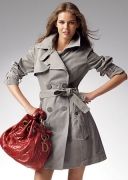
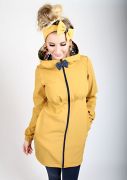

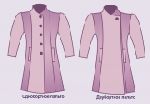

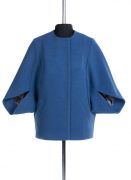
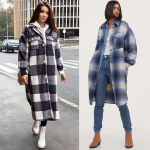


 Join my community on Viber...
Join my community on Viber...

